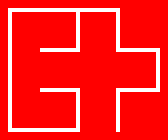Expo 64
The Swiss national exposition of 1964 (French: Exposition nationale suisse de 1964), usually shortened to Expo 64, was a world's fair held in Lausanne, more specifically in Vidy and the neighbouring Vallée de la Jeunesse, between 30 April and 25 October 1964.

Expo 64 was directed by Gabriel Despland, with Alberto Camenzind as chief architect, Edmond Henri as administrative director, and Paul Ruckstuhl as financial director.[1] The syndic of Lausanne, Georges-André Chevallaz, was also part of the direction committee.
Sectors
Expo 64 was divided into eight sectors:[2]
- La Voie Suisse ("the Swiss way"): main sector of Expo 64, devoted to the History, political system, cultural values and future perspectives of Switzerland
- L'art de vivre ("art of life"): devoted to the resources of the 1960s, such as the environment, the way of life and spiritual aspirations.
- Communications et transports ("Communications and transports"): Communications, transports and their consequences on territorial equipment.
- Industrie et artisanat ("Industry and craft"): innovations from 1945.
- Les échanges ("import and export"): indigenous production was emphasised against importations.
- Terre et la forêt ("Earth and forest"): a variety of trees and several typical farms were put on display, along with activities such as milk or wine production.
- Le port (harbour): the leisure centre of the exposition, with restaurants, coffee shops, shops, dance clubs and various attractions.
- La Suisse vigilante ("Vigilant Switzerland"): promoting the Swiss Army.
Attractions
The main attractions of the exposition were:[3]
- The symphonie des échanges ("Symphony of exchanges"): a symphony played on machines
- A monorail.
- The Mésoscaphe Auguste Piccard (PX-8), and tourism submarine.
- The "Spiral" tower
- Un jour en Suisse ("A day in Switzerland"), a sociological study
- La Suisse s’interroge ("Switzerland ponders"), five 3-minute films by Henry Brandt
The results of the sociological study Un jour en Suisse were subject to censorship, both with the selection of question (questions such as "can one be a good Swiss while being a conscious objector", "not believe in God", "support the right to abortion" were suppressed) and later when the answers were processed and suggested results that the Federal Council found embarrassing.[4][5] 580,000 people, out of 12 million visitors, answered the study.[6]
Remains of Expo 64
Some of the attractions of Expo 64 still exist and can be seen on the lakeside:[7]
- The théâtre Vidy-Lausanne
- The Esplanade des trois Suisse
- A concrete building in the Vallée de la Jeunesse and a playground
- The voile d'or
- A miniature railway in Vidy
Furthermore, the A1 motorway between Lausanne and Geneva, built for Expo 64, is still in operation, along with the Maladière roundabout at the end of the A1. An aerial tramway in Les Diablerets connecting the Scex Rouge, at nearly 3,000 metres, was also inaugurated in occasion of the exhibition.[8]
References
- Préparer l'Expo, Ville de Lausanne
- Les secteurs, Ville de Lausanne
- Attractions principales Archived 2007-11-24 at the Wayback Machine site lausanne.ch consulté le 1er décembre 2010.
- "Lausanne 1964: deux idées, une Expo". Archived from the original on 2014-06-16. Retrieved 2014-11-08.
- Un jour en Suisse, Gulliver à l’Expo 64, un questionnaire censuré, Municipalité de Lausanne
- "Gulliver publie les résultats généraux de son questionnaire au 15 juin 1964" (PDF). Archived from the original (PDF) on 2014-04-30. Retrieved 2014-11-08.
- Vestiges de l’Expo 64 Archived 2014-11-08 at the Wayback Machine, 17 avril 2014, Le Temps (quotidien suisse)
- "History". Glacier 3000. Archived from the original on 2014-11-10. Retrieved 2014-11-10.
External links
| Wikimedia Commons has media related to Expo 1964. |
- L'Expo64 de Lausanne
- Histoire des expositions nationales suisses
- Documents audiovisuels sur les Expositions nationales suisses (Archives de la radio et de la télévision suisses)
- Vidéos retraçant l'Expo 64 (Archives de la Télévision suisse romande)